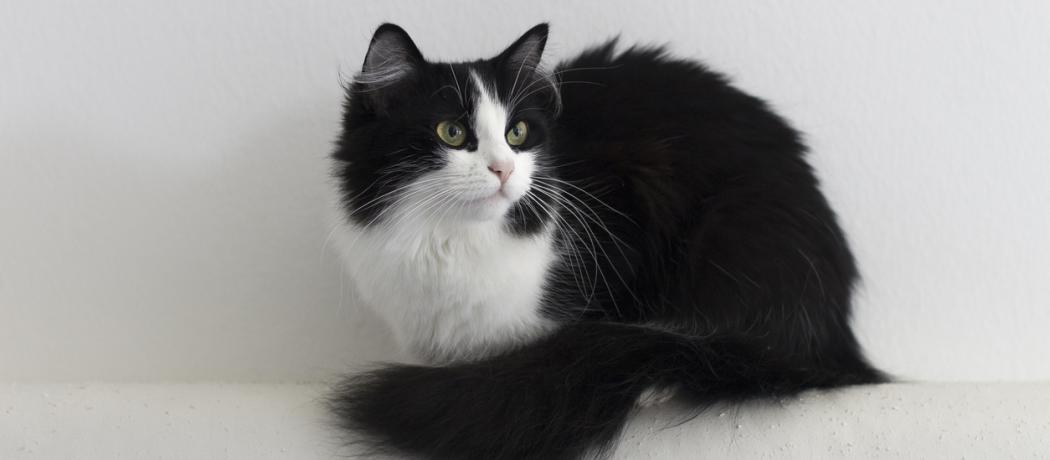A couple of weeks ago Spookie the robotic cat arrived at our house. Soft of fur, she is a lovely black-and-white cat doll, about 60 cm long and 1.3 kg in weight. Of course, there is a plastic box inside with four batteries and an on/off switch. Switch the cat on and start to stroke her head, back, or tummy; squeeze her paws; or play with her tail, and she will reward you with a series of meows, move her head, blink her eyes, turn on her back, bring her paws to her face, and flip back onto her tummy. And she will purr. If you leave her alone she will emit a few meows and after a few minutes go to sleep. My wife, who treasured the original, live Spookie of many years ago, now, in the fog of her dementia, does not yet recognize this very similar artifact as a potential playmate. She prefers Bernard, the trusty stuffed dog, which she has been hugging for months now, or the baby doll, which she often holds to her chest. After a few days of us stroking the cat and making it move and meow and purr, she imitated our approach to the cat, but still it is not her cat yet.
Until last October, for about 2 years we had regular weekly visits from Pixie, an 8-year-old loving and energetic mix of Cairn terrier and Shih-Tzu. Bess, my wife, was then mostly in a wheelchair. Through the haze of her dementia she needed some time to engage with the wiggling ball of fur. Then, she smiled, patted Pixie for a short time, even let the dog sit in her lap, but soon drifted away into her own world, only to come to moments of reality as the dog yelped for attention. I think the caregivers and I received most of the therapy by having this lively bundle of love in our house for an hour or so. Since Bess fell and fractured her hip in October we have been caring for her in and out of a rented hospital bed, a reclining easy chair, and a wheelchair, and for a while we even had to use an overhead hoist. The environment and Bess’s fleeting attention spans just were not quite right for our therapy dog. Although we have collected a host of stuffed pet toys for her over the last few years, reaching out for a robotic pet was our attempt to add some variety to her life.
The use of robotic pets in child care settings, nursing homes, psychiatric facilities, and private homes has been reported in many studies, particularly in the US, Japan, and Australia. The overall conclusion in these studies is that using robotic toys and robopets decreases stress and anxiety and, in care facilities, results in a reduction in the use of psychoactive and pain medications. The reliability of these conclusions is unclear, given methodological weakness, lack of validity assessment, inadequate sample sizes, and the participants’ varied stages of dementia. But who cares? Our robotic cat purrs when we stroke her back and clearly loves us. And we don’t have to worry about feeding a cat or cleaning its litterbox.
—George Szasz, CM, MD
Suggested reading
Filan SL, Llewellyn-Jones RH. Animal-assisted therapy for dementia: A review of the literature. Accessed 3 May 2019. www.ncbi.nlm.nih.gov/books/NBK73363.
Heerema S. How does pet therapy benefit people with dementia? Accessed 3 May 2019. www.verywellhealth.com/how-does-pet-therapy-benefit-people-with-dementia-98677.
Petersen S, Houston S, Qin H, et al. The utilization of robotic pets in dementia care. J Alzheimers Dis 2017;55:569-574.
Szasz G. Pet therapy. 14 December 2017. www.bcmj.org/blog/pet-therapy.
This post has not been peer reviewed by the BCMJ Editorial Board.


